With a surface level of 3,812 metres, Lake Titicaca ranks as the highest navigable lake in the entire world. The high altitude makes for cool mornings, hot days, and windy evenings, so when it comes to packing you really want to have a wardrobe that can handle the quick changes in temperature. I only brought a 10L daypack when I did my overnight stay on Lake Titicaca, but I managed to fit everything I needed. Knowing that my homestay wouldn’t necessarily have running water or electricity, I had to pack a few additional items. Today I’m sharing a few ideas of what to pack for Lake Titicaca in Peru so you too can be prepared.
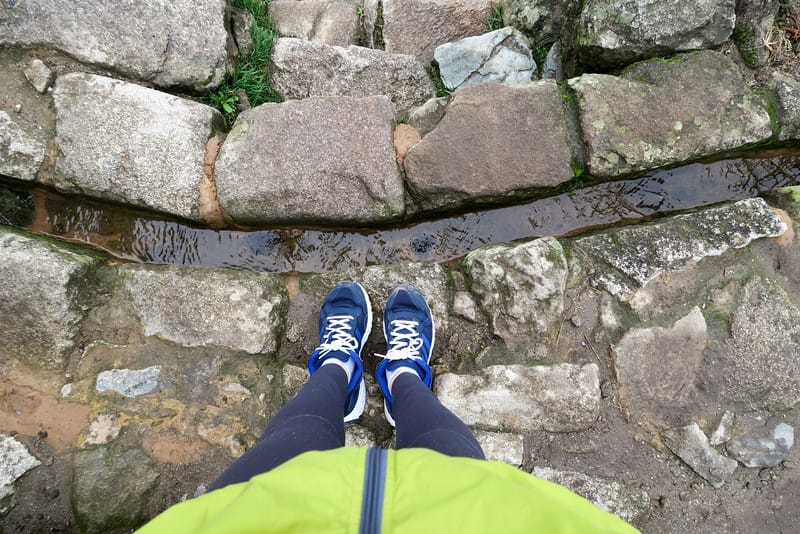
What to pack for Lake Titicaca
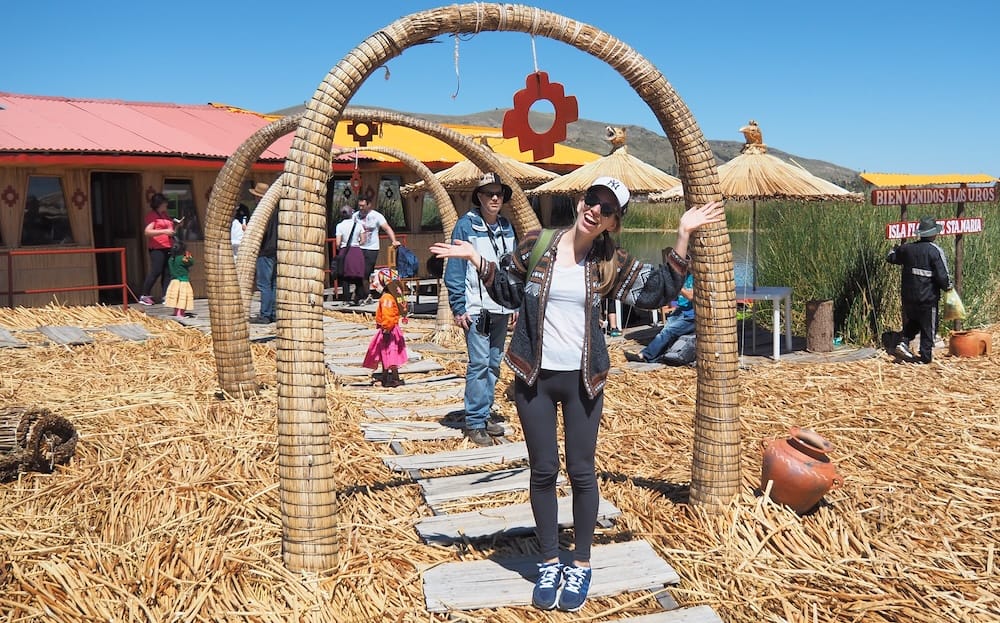
Clothes:
1 windbreaker (for late afternoons and evenings)
1 sweater (I picked up a warm alpaca sweater at a market in Cuzco)
2 t-shirts (you’ll get sweaty with all the hiking involved)
1 pair of leggings (I wore these by day and also slept in them)
2 pairs of socks
2 pairs of undies
1 bra
1 pair of running shoes or hiking boots
1 baseball cap or sunhat (to wear by day)
1 touque or chuyo (it gets really cold at night)
1 pair of mittens (I forgot these and my hands froze on the sunset hike)
1 pair of sunglasses (the sun can be a bit blinding at that altitude)
Toiletteries:
Toilet paper
Deodorant
Sunscreen
Hand sanitizer
Chapstick
Toothbrush + toothpaste
It’s unlikely you’ll get access to a shower while you’re doing your homestay on Lake Titicaca, so I’m not going to suggest bringing shampoo or soap. Not all homes have modern bathrooms with showers, and the ones that do may not have hot water. It’s best you have a shower before the start of your trip and then wait it out until you get back to Puno. Going 2 days without a shower isn’t so bad anyway!
Miscellaneous:
Flashlight (in case your home doesn’t have electricity)
Camera with backup batteries (the scenery is beautiful!)
Water bottle (you’ll want to bring these on the hike but you can also buy them on the island)
Cash (there are no ATMs on the island)
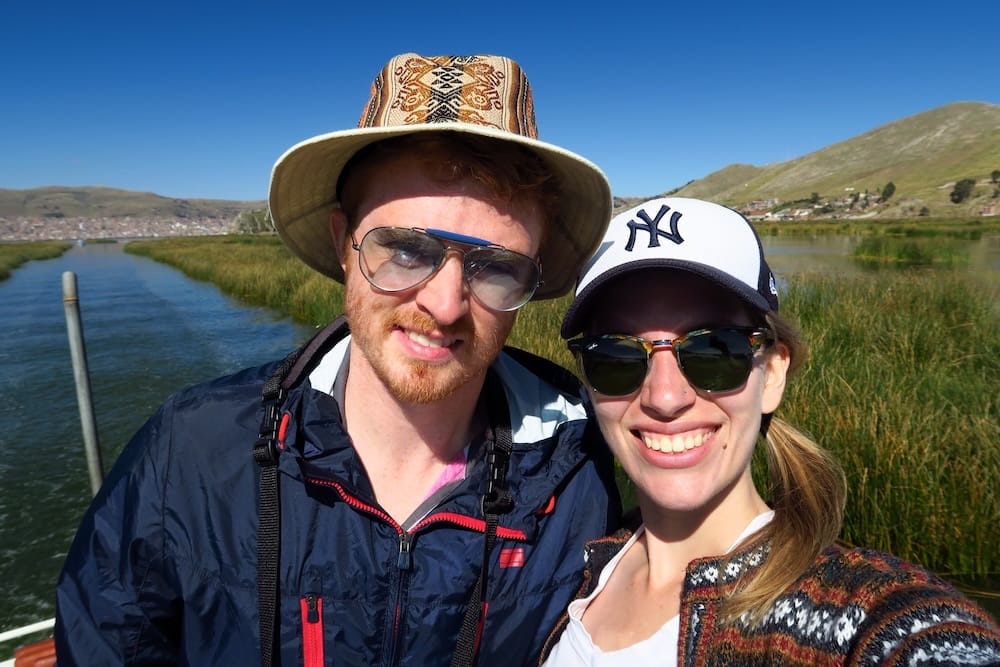
Understanding Lake Titicaca’s Unique Climate
Lake Titicaca’s high-altitude location significantly affects weather patterns. Travelers can expect warm, sunny days but very chilly nights. Temperatures typically range from 15°C (59°F) during the day to nearly freezing at night, especially between May and August. The sun at high altitude is deceptively strong, even when temperatures feel cool.
The dry season (April–October) sees sunny days ideal for exploration. However, even during this period, winds can be cold and harsh. Conversely, the rainy season (November–March) brings frequent downpours, cloudy skies, and cooler daytime temperatures. Understanding these climate conditions is essential when deciding what to pack.
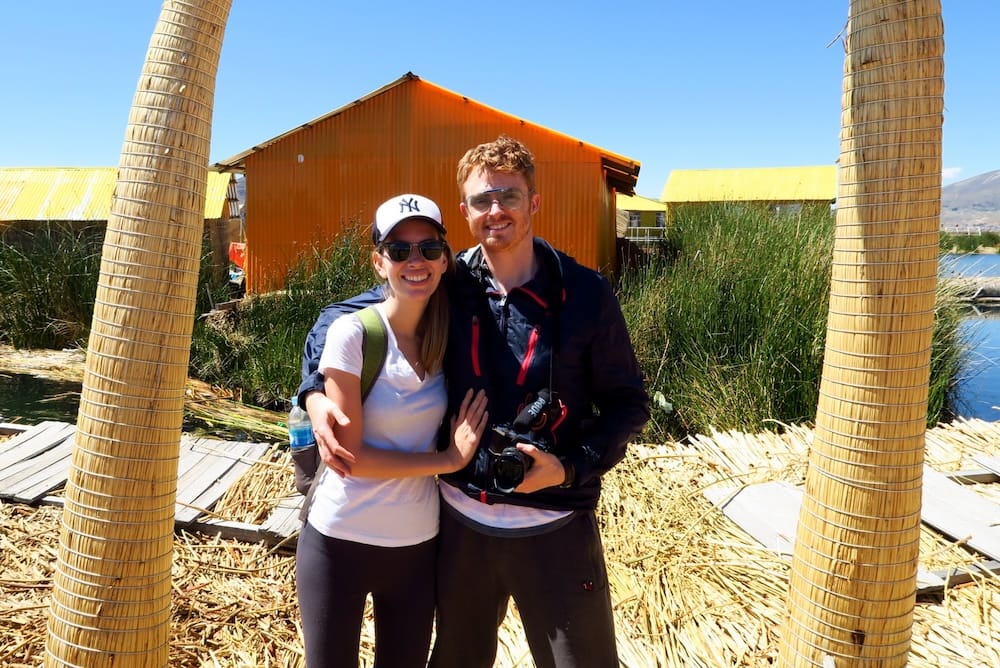
Essential Clothing Items to Pack
Layering is the key to comfort at Lake Titicaca. Here are detailed recommendations for your wardrobe:
Base Layers
Thermal underwear or base layers made from moisture-wicking fabrics such as merino wool or synthetic fibers are crucial. They regulate your body temperature by keeping moisture away from your skin, preventing chills, especially during early morning activities or night excursions.
Mid Layers
Your mid-layer should provide warmth without bulk. Wool or fleece pullovers, hoodies, or sweaters offer excellent insulation. These layers trap air, retain body heat, and remain comfortable when temperatures fluctuate throughout the day.
Outer Layers
A reliable waterproof and windproof jacket is indispensable. Weather conditions can quickly shift, so choose a jacket with breathable material, adjustable hood, cuffs, and pockets for practicality. A versatile jacket also accommodates layering beneath it without sacrificing mobility or comfort.
Pants
Convertible hiking pants offer versatility. They can transform quickly from full-length trousers during colder mornings to shorts as the day warms up. Quick-dry materials are ideal for potential showers or splashes on boat rides.
Footwear
Hiking boots with ankle support, waterproof membranes (such as Gore-Tex), and durable traction soles are highly recommended. They provide comfort during hikes, exploration of islands, and stability on uneven ground. Additionally, pack a comfortable pair of casual shoes or sandals for relaxing moments and leisure time.
Socks
Pack multiple pairs of wool or thermal socks designed specifically for hiking. Good-quality socks prevent blisters, provide cushioning, maintain warmth, and manage moisture effectively.
Headwear
Include a wide-brimmed hat or cap to protect from sun exposure during the day, and a woolen beanie or traditional Peruvian chuyo for chilly evenings. These will help retain body heat, as a significant amount is lost through the head in colder conditions.
Gloves and Scarves
Bring lightweight gloves for daytime warmth, plus thicker thermal gloves or mittens for evenings and early mornings. A warm scarf or neck gaiter provides additional protection from the wind.
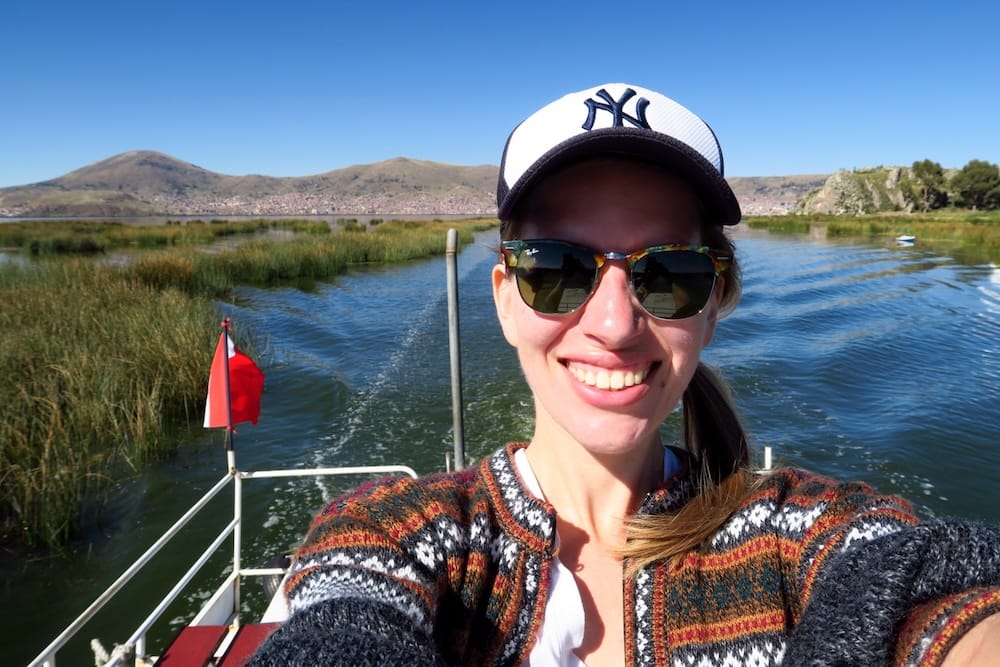
Essential Accessories and Gear
Packing the right accessories can significantly enhance your Lake Titicaca experience.
Daypack
A lightweight, waterproof daypack is essential. Opt for a size between 20 and 30 liters to comfortably carry snacks, water, camera gear, clothing layers, and any personal items you might need during daily excursions.
Sunglasses
The intensity of the high-altitude sun can cause severe eye strain or damage. Polarized sunglasses with UV400 protection are strongly advised for comfort and safety.
Sunscreen and Lip Balm
High SPF sunscreen (at least SPF 50) is crucial, as UV exposure is intense. Bring water-resistant and sweat-proof sunscreen to apply regularly. Lip balm with SPF protection prevents chapping and painful sunburns.
Reusable Water Bottle
Staying well-hydrated at altitude helps prevent symptoms of altitude sickness. Carry a reusable bottle of at least one liter and refill it regularly. Many hotels or accommodations offer filtered water stations.
Headlamp or Flashlight
A portable headlamp or flashlight is invaluable, particularly on islands such as Taquile and Amantani, where electricity may be limited. These devices provide safe navigation after sunset and during nighttime activities.
Personal First Aid Kit
Pack a personalized first aid kit, including medications for altitude sickness (such as acetazolamide, after consulting your doctor), pain relievers, motion sickness medication, antibacterial cream, plasters, and personal prescriptions.
Toiletries
Environmentally-friendly toiletries such as biodegradable soap and shampoo help protect Lake Titicaca’s delicate ecosystem. Additionally, pack standard items like toothpaste, toothbrush, and moisturizer to combat the dry high-altitude air.
Trekking Poles
Adjustable trekking poles can reduce knee strain and improve stability during hikes around the islands. They’re especially beneficial when ascending or descending steep trails on Taquile or Amantani.
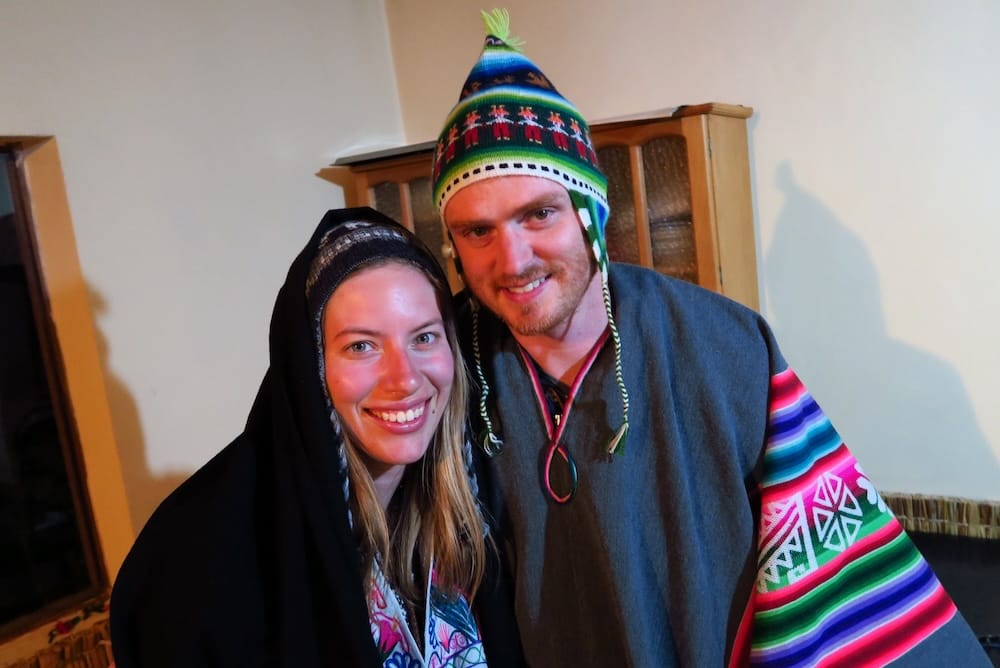
Cultural Considerations for Your Trip
Respectful cultural interaction is essential around Lake Titicaca, home to indigenous groups such as the Uros, Quechua, and Aymara peoples.
Dress modestly, especially in smaller communities. Long pants, shirts covering shoulders, and avoiding revealing clothing demonstrate respect for local traditions. Participating in community-led experiences like craft workshops or traditional dances enriches your understanding and supports local economies.
Buying crafts directly from artisans is a sustainable practice. These handmade items—textiles, ceramics, and jewelry—reflect unique cultural heritage and provide valuable income to the communities.
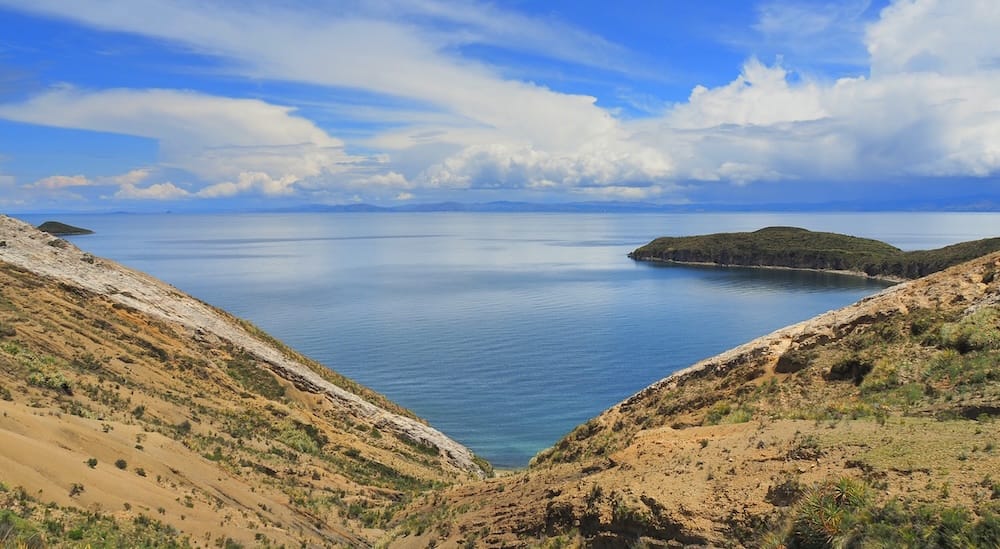
Health and Safety Tips for High Altitude
Altitude sickness is a common concern at Lake Titicaca due to its elevation. Symptoms include headaches, nausea, dizziness, and shortness of breath. Preventative measures include ascending slowly, maintaining hydration, avoiding alcohol, and resting upon arrival.
Consuming coca tea, a local remedy, may help relieve symptoms. If symptoms persist, seeking medical attention promptly is crucial. Ensure travel insurance coverage includes high-altitude activities and medical evacuation, offering peace of mind during your travels.
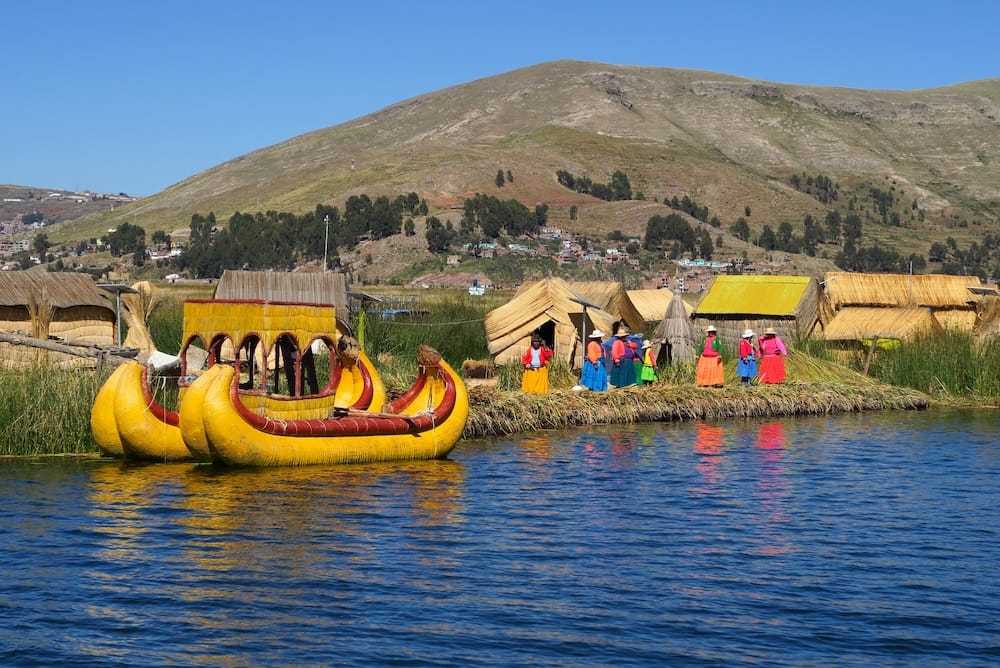
Must-Visit Sites and Experiences
Lake Titicaca offers numerous cultural and natural attractions that should be part of your itinerary:
Uros Floating Islands: Explore the remarkable islands constructed entirely from reeds. Interact with residents, learn their customs, and even enjoy a traditional reed boat ride.
Taquile Island: Known for outstanding textile arts, Taquile offers picturesque hikes and immersive homestays, giving visitors a glimpse of traditional island life.
Amantani Island: Popular for authentic overnight homestays, Amantani provides insight into rural Andean lifestyles. Hike to Pachatata or Pachamama peaks for stunning panoramic views.
Puno: The city is the cultural gateway to Lake Titicaca. It hosts vibrant events like the Virgen de la Candelaria festival, featuring traditional music and dances.
Isla del Sol and Isla de la Luna (Bolivian side): Rich in Inca history and mythology, these islands boast impressive archaeological ruins and scenic trails.
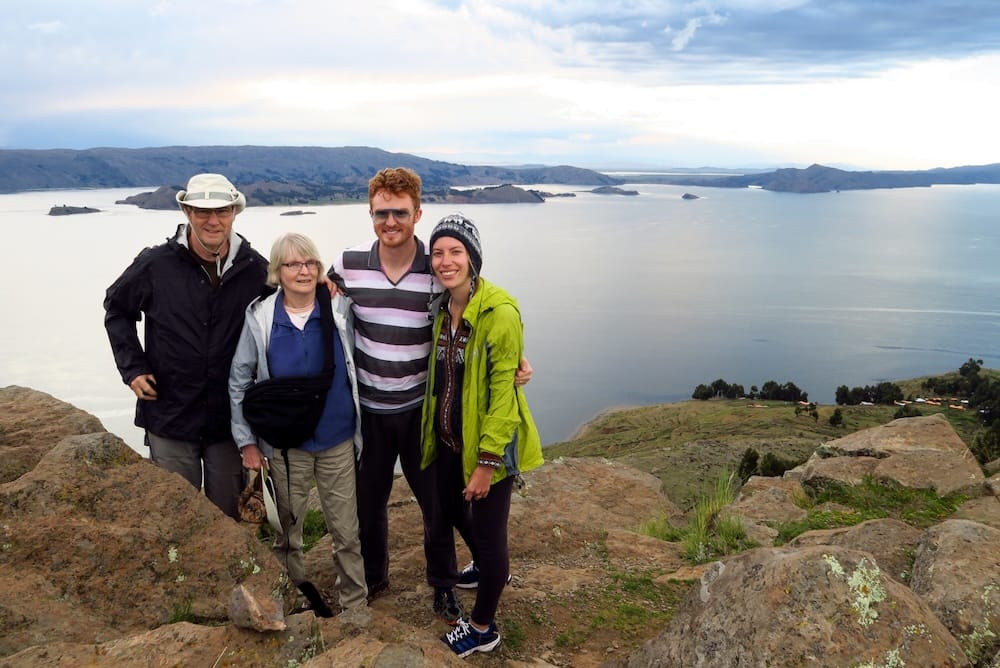
Practicing Sustainable and Responsible Tourism
Responsible travel at Lake Titicaca includes supporting locally-run businesses, choosing sustainable accommodation, minimizing plastic waste, and respecting wildlife habitats. Observing animals respectfully without interference helps preserve fragile ecosystems.
Opt for eco-friendly tours that give back to communities and educate travelers about local environmental and cultural conservation efforts. Reducing your footprint protects Lake Titicaca’s delicate ecological balance for future generations.
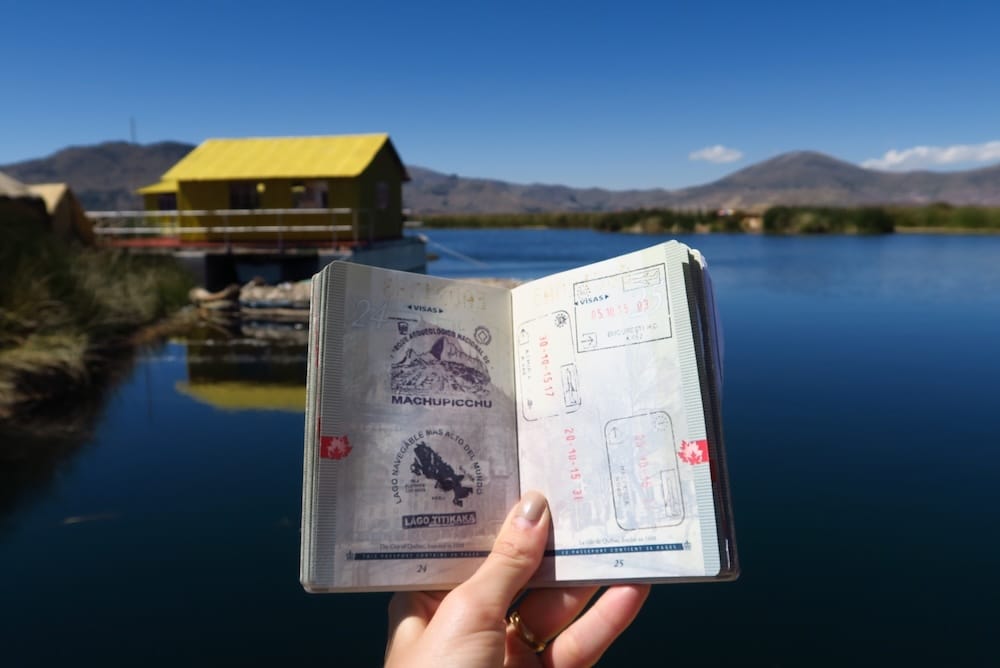
More Lake Titicaca Packing & Planning Tips (for Peru and Bolivia)
You’ve got the basics down—layers, sunscreen, headlamp—but Lake Titicaca rewards a little extra planning because weather, altitude, and simple-living homestays all show up on the same day. Think of this section as your “do more with less” add-on.
Layering That Actually Works (All Day, Any Wind)
Days on the water are sneaky. You’ll hike uphill in full sun, sit still on a breezy boat, and watch the cold air rush in the moment the light fades. The trick is packing thin, high-output layers you can swap in seconds. Merino or synthetic base layers keep you dry; a midweight fleece traps heat without bulk; and a real windproof shell (not just “water-resistant”) makes everything else feel warmer. At night, your “sleep kit” (beanie + warm socks + leggings) is worth its space even in toasty rooms—stone walls and thin air lose heat fast.
- Prioritize windproof over heavy insulation; the lake’s chill is about air movement.
- Pack a sleep beanie and dedicated sleep socks—they stay dry = stay warm.
- Choose dark, quick-dry leggings you can hike in by day and sleep in by night.
- A buff/neck gaiter does triple duty: sun, dust, and bedtime warmth.
- Keep one sacrificial cotton tee for the boat ride back—feels fresh post-hike.
Layering Matrix
| Time/Scenario | What It Feels Like | Wear This | Swap-Out in Seconds |
|---|---|---|---|
| Dawn boat ride | Cold + breeze | Base + fleece + wind shell, beanie | Add gloves if your seat faces wind |
| Late-morning climb | Intense sun, low wind | Base + sleeves, brimmed hat, sunglasses | Shell into daypack; sunscreen every 90 min |
| Mid-afternoon stroll | Warm shade, gusts | Base + light fleece, buff | Shell around waist = instant shield |
| Sunset viewpoint | Rapid temp drop | Base + fleece + shell, beanie + warm socks | Hot tea in pocket thermos helps |
| Night in room | Stone chill | Base leggings + wool socks + beanie | Borrow extra blanket from host |
Altitude Game Plan (Arrive Curious, Not Queasy)
At 3,800+ meters, even seasoned hikers feel slower. You don’t have to suffer—just treat the first 24–36 hours like a “soft start.” Walk, don’t sprint; sip, don’t chug; eat small, not banquet-big. Coca tea is a comforting sipper. Electrolytes are the actual workhorse. If you’re coming directly from sea level, build one buffer night in Puno or Copacabana before committing to early-morning island hikes.
- Hydrate steadily (electrolytes help absorption).
- Light meals day one (soups, quinoa, trout, veggies).
- No alcohol the first night; save that celebratory pisco.
- Gentle pace—you’ll still be first to the view if you start earlier.
- Carry ibuprofen for headache; see a doctor for anything persistent.
At-Altitude Day Plan
| Time | Do | Tiny Tip |
|---|---|---|
| Arrival (pm) | 2–3 km stroll on flat, early dinner | Skip heavy sauces + fried foods |
| Evening | 500 ml water + electrolytes, warm shower | Lay out warm sleep kit now |
| Morning 1 | Slow breakfast + coca tea, 1–2 hrs easy walk | Apply SPF before stepping outside |
| Midday 1 | Light lunch, shade break | Sunscreen re-up, hat stays on |
| Evening 1 | Early bed, warm layers | Pre-fill bottle for night sips |
Checklist Cheat Sheet
| Item | Why It Helps | Use It When |
|---|---|---|
| Windproof shell | Beats lake chill instantly | Boats, viewpoints, dusk |
| Beanie + warm socks | Sleep warmer anywhere | Night in stone rooms |
| Buff/neck gaiter | Sun, dust, warmth | Midday hikes, windy piers |
| Electrolyte tabs | Headache prevention | First 48 hours at altitude |
| Power bank + short cable | Keep devices alive | Homestays, long boats |
| Filter bottle / UV pen | Less plastic, more freedom | All island days |
| Headlamp | Hands-free after dark | Stairs, outhouse runs |
| Tiny gift bundle | Thoughtful connection | Homestay arrival |
| Cash (small bills) | Tips, crafts, fees | Villages, piers, markets |
FAQ: What to Pack for Lake Titicaca — Smart Layering, Altitude Prep & Practical Essentials
Packing for Lake Titicaca isn’t just about clothes. It’s about anticipating dramatic temperature swings, high-altitude quirks, and rustic overnight stays. Here are the most common traveler questions to help you pack confidently for your Peru–Bolivia adventure.
How cold does it really get at night?
Nights can dip close to freezing, especially in the dry season (May–August). Stone houses lose heat quickly, so a beanie, warm socks, and a solid mid-layer will make your nights far more comfortable—even indoors.
Do I really need both a sunhat and a beanie?
Yes. Mornings and nights are icy, while midday sun at 3,800+ metres is intense. A wide-brimmed hat or cap protects you from UV rays, and a wool hat or chuyo keeps you cozy after dark.
Should I pack a big jacket or rely on layers?
Layers win every time. A windproof shell + fleece + base layers is far more versatile than a bulky coat. You can shed or add pieces as temperatures shift dramatically throughout the day.
Is rain gear necessary?
During the rainy season (November–March), absolutely—showers can roll in fast. Even in the dry season, a light waterproof shell is smart for boat rides and windy evenings on the islands.
What kind of footwear works best?
Waterproof hiking shoes or boots with traction are ideal for uneven island trails. Pair them with warm, moisture-wicking socks. A pair of sandals or casual shoes is handy for downtime in Puno or around your homestay.
How do I pack light but still bring everything I need?
Prioritize multi-use items: leggings that double as sleepwear, a buff that works as sun protection and a neck warmer, and quick-dry tops you can layer. A 10–20 L daypack is usually enough for a 1–2 night homestay.
What’s essential for the homestay experience?
Electricity and hot water aren’t guaranteed. Pack a headlamp, power bank, toilet paper, hand sanitizer, and small gifts or cash for your hosts. A warm sleep kit makes a big difference on chilly nights.
Do I need to worry about altitude sickness?
Yes, the lake sits at 3,812 m. Symptoms can include headaches, fatigue, or shortness of breath. Hydrate steadily, take it easy the first 24 hours, and try coca tea or prescribed acetazolamide if needed. Spending a night in Puno or Copacabana before island hikes helps.
How much water should I bring?
Aim for at least 1–1.5 L per person per day. A reusable bottle or filter bottle cuts down on plastic waste, and most accommodations provide filtered refills. Hydration is key to altitude comfort.
Should I bring toiletries for a shower?
No need for shampoo or soap—most homestays lack showers, and cold water isn’t fun at altitude. Shower before your trip, then rely on wet wipes and hand sanitizer until you’re back in town.
Is cash really necessary?
Definitely. There are no ATMs on Taquile or Amantani Islands, and small bills are essential for buying crafts, paying for meals, or tipping guides and hosts. Plan ahead in Puno or Copacabana.
Any insider packing tips most travelers overlook?
Yes: bring a buff or neck gaiter, electrolyte tablets for altitude headaches, and a small thermos—hot tea on a cold boat ride feels like luxury. And don’t forget sunscreen + SPF lip balm; the high-altitude sun can burn even on overcast days.
Do you have any other suggestion of what to pack for Lake Titicaca?

Hi Audrey! Thanks so much for posting about your Lake Titicaca homestay and packing advice! We just booked the same trip with the company you recommended for the middle of September after a few days in Cusco. I’m having trouble deciding if I should pack a 3-in-1 jacket – they are kind of bulky and I’d hate to have to lug it around everywhere, but I also am worried I’ll freeze during the nights in Cusco and during the homestay. Do you have any advice?
I’m not sure how bulky your jacket is, but I would say a waterproof windbreaker and a fleece are two musts for Peru. Cusco and Puno warm up during the day, but the altitude means cooler temperatures at night. Also, if you go to Machu Picchu for sunrise, you’ll want the warm layers as it can take a few hours for the fog to clear. If you don’t want to bring along the fleece, you can always buy an alpaca sweater at one of the markets in Cusco – they are super warm and it makes for a cool souvenir.